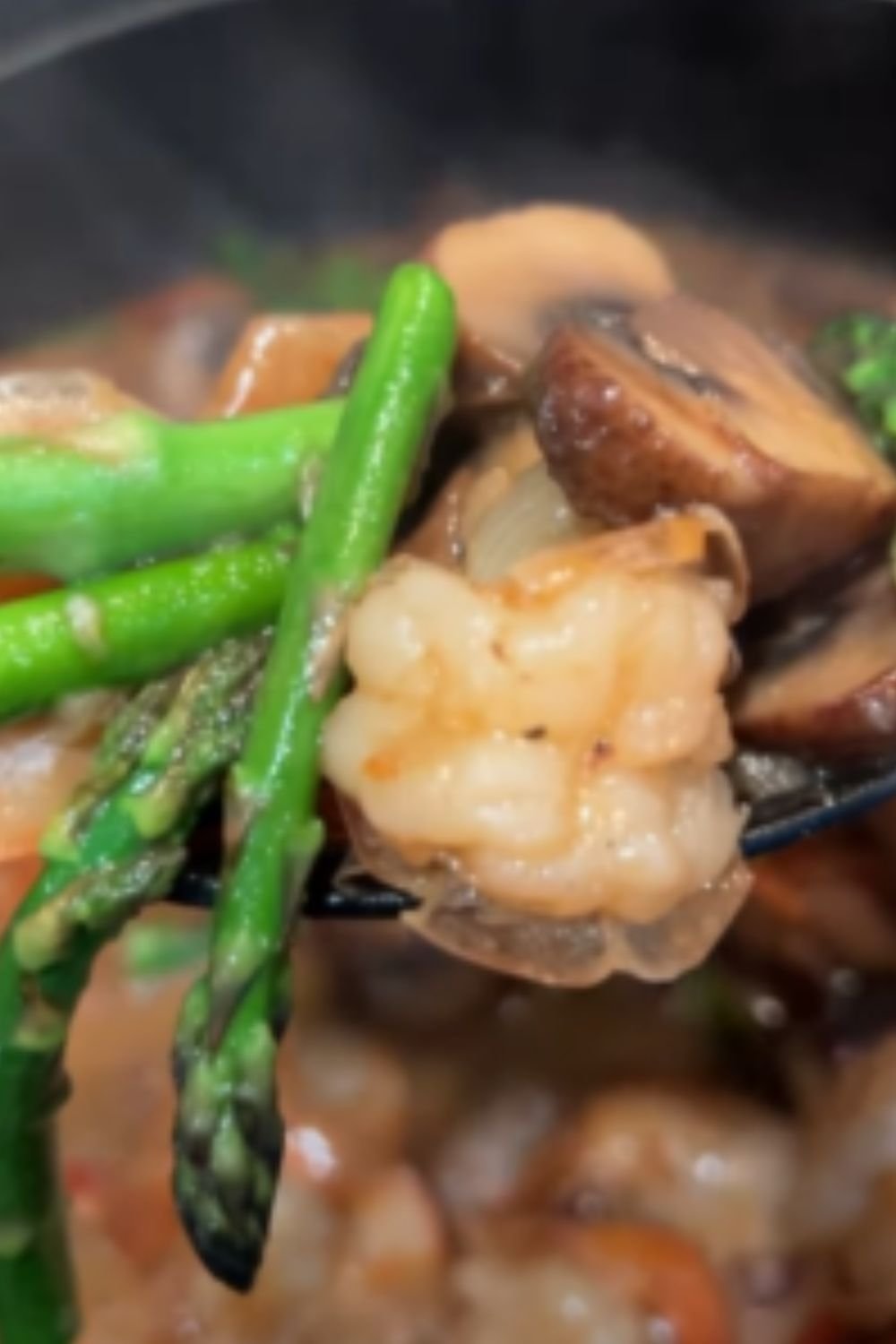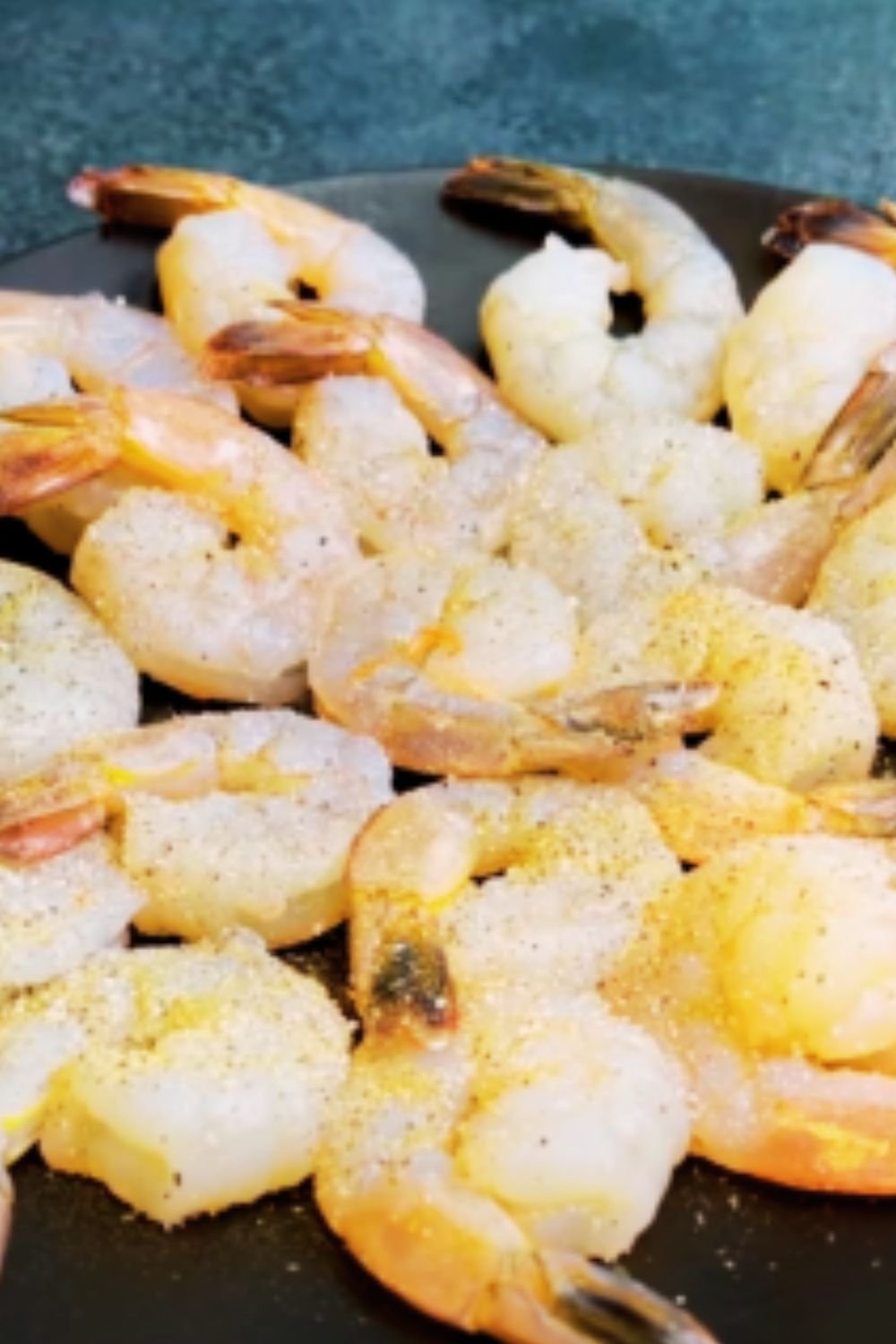There’s something magical about the moment Cajun spices hit a hot skillet. The aroma that fills your kitchen—a symphony of paprika, cayenne, oregano, and thyme—is enough to transport you straight to Louisiana’s bayou country. I’ve been perfecting my Cajun shrimp recipe for years, and I’m thrilled to share what I’ve learned about creating truly exceptional Cajun-style shrimp that balances bold flavors with the delicate sweetness of fresh seafood.
The Cajun Cuisine Connection
Before diving into my recipe, let’s appreciate where this culinary treasure comes from. Cajun cuisine emerged from the French-speaking Acadian immigrants who settled in Louisiana’s bayou region after being expelled from what is now Nova Scotia in the 18th century. These resilient people adapted their cooking techniques to local ingredients, creating what we now recognize as Cajun cuisine—hearty, spicy, and deeply flavorful.
Traditional Cajun cooking revolves around what locals call the “holy trinity” of vegetables: bell peppers, onions, and celery. Combined with locally available proteins and a distinctive blend of spices, these humble ingredients transform into dishes that tell the story of a people who refused to let hardship diminish their zest for life.
Why My Cajun Shrimp Recipe Stands Out
I’ve spent countless hours experimenting with different techniques and ingredient ratios to create the perfect Cajun shrimp dish. What makes this recipe exceptional is the balance between letting the shrimp’s natural sweetness shine through while embracing the robust flavor profile of authentic Cajun seasoning.
The key differences in my approach:
- Perfect spice blend: I’ve fine-tuned my seasoning mix to provide heat without overwhelming the palate
- Proper cooking technique: Shrimp overcooks in seconds, so timing is everything
- Quality ingredients: Starting with good-quality shrimp makes all the difference
- Layered flavors: Building flavor in stages creates depth that simple one-step cooking can’t match
Essential Ingredients for Authentic Cajun Shrimp
The Shrimp
Let’s start with the star of the show. While you might be tempted to grab whatever shrimp is on sale, investing in quality makes a significant difference:
| Shrimp Type | Size Count | Best Uses | Notes |
|---|---|---|---|
| Wild Gulf Shrimp | 16-20 per pound | Premium dishes, showcasing shrimp flavor | Sweet flavor, firm texture, sustainable option |
| White Shrimp | 21-25 per pound | All-purpose, holds up well to bold spices | Mild flavor, slightly softer texture |
| Pink Shrimp | 26-30 per pound | Quick-cooking dishes, pasta additions | Delicate flavor, cooks very quickly |
| Farm-Raised Shrimp | Various sizes | Budget-friendly option | Consistent availability, texture varies by source |
I personally prefer wild-caught Gulf shrimp in the 16-20 size range (jumbo), as they provide more substance and are less likely to overcook. However, 21-25 count (large) works perfectly well too and might be more budget-friendly.
The Authentic Cajun Seasoning
You can certainly buy pre-made Cajun seasoning, but nothing beats homemade for freshness and customized heat levels. My signature blend includes:
| Ingredient | Amount | Flavor Contribution |
|---|---|---|
| Paprika | 2 tablespoons | Color, mild sweetness, base flavor |
| Garlic powder | 1 tablespoon | Savory depth, aromatic quality |
| Onion powder | 1 tablespoon | Sweet background notes, aromatics |
| Cayenne pepper | 1-2 teaspoons | Heat (adjustable to preference) |
| Dried oregano | 2 teaspoons | Herbal complexity, traditional element |
| Dried thyme | 2 teaspoons | Earthy, aromatic element |
| Black pepper | 1 tablespoon | Sharp spice, background heat |
| White pepper | 1 teaspoon | Different heat profile, complexity |
| Salt | 1 tablespoon | Flavor enhancer, balances seasoning |
This seasoning blend will make more than you need for one batch of shrimp, but it keeps well in an airtight container for future use. The beauty of making your own is the ability to adjust the heat level by modifying the amount of cayenne.
The Holy Trinity Plus
The vegetable foundation of Cajun cooking is non-negotiable:
- Bell peppers (preferably a mix of colors for visual appeal)
- Onions (yellow or white work best)
- Celery (the often-forgotten essential component)
I also add:
- Fresh garlic (much more impactful than the powder in the seasoning)
- Green onions (for a fresh finish)
- Fresh herbs (parsley and a touch of thyme)
The Ultimate Cajun Shrimp Recipe
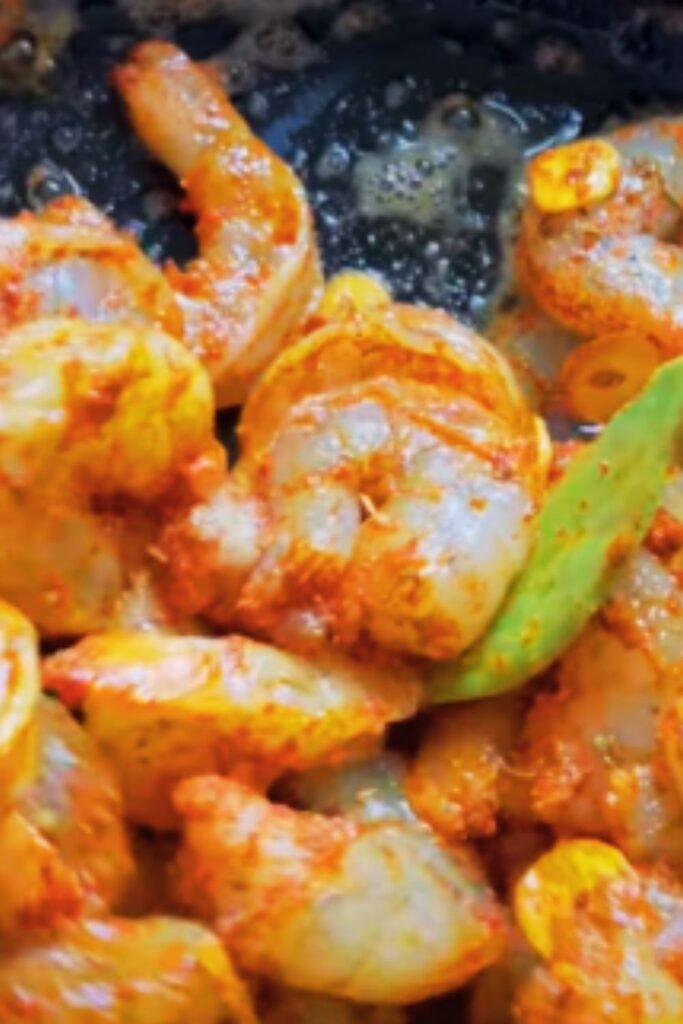
Ingredients
For the shrimp:
- 2 pounds large shrimp (16-20 count), peeled and deveined (tails on or off, your preference)
- 2-3 tablespoons homemade Cajun seasoning
- 2 tablespoons olive oil
- 2 tablespoons butter
- 4 cloves garlic, minced
- 1 medium onion, diced
- 1 red bell pepper, diced
- 1 green bell pepper, diced
- 2 stalks celery, finely chopped
- 1/4 cup chicken broth or clam juice
- 2 tablespoons fresh lemon juice
- 1/4 cup chopped fresh parsley
- 4 green onions, sliced
- Salt to taste
For serving:
- Steamed rice
- Lemon wedges
- Hot sauce (Crystal or Tabasco)
Instructions
- Prepare the shrimp: In a large bowl, toss the peeled and deveined shrimp with 1-2 tablespoons of Cajun seasoning until evenly coated. Allow to rest for 15-20 minutes at room temperature.
- Prepare your mise en place: Have all vegetables chopped and ready before starting to cook. The cooking process moves quickly, so organization is crucial.
- Heat your skillet: Use a large, heavy skillet (cast iron works beautifully) over medium-high heat. Add 1 tablespoon of olive oil and 1 tablespoon of butter.
- Cook the vegetables: When the butter stops foaming, add the onions, bell peppers, and celery with a pinch of salt. Sauté for 3-4 minutes until they begin to soften but still maintain some crispness.
- Add aromatics: Stir in the minced garlic and cook for another 30-60 seconds until fragrant but not browned.
- Remove vegetables: Transfer the vegetable mixture to a bowl and set aside. This prevents them from overcooking while we sear the shrimp.
- Cook the shrimp: Add the remaining tablespoon of olive oil and butter to the same skillet. When hot, add the seasoned shrimp in a single layer (work in batches if needed – overcrowding will steam rather than sear them).
- Perfect the timing: Cook the shrimp for approximately 2 minutes on the first side until they develop a nice crust, then flip and cook for only 1 minute on the second side. Shrimp cook extremely quickly – they’re done when they just turn pink and start to curl into a C shape (but not a tight O shape, which indicates overcooking).
- Return vegetables: Return the sautéed vegetables to the skillet with the shrimp.
- Create the sauce: Add the chicken broth or clam juice and lemon juice to the skillet, stirring to deglaze and create a light sauce. Allow to simmer for just 1 minute to combine flavors.
- Final touches: Remove from heat and sprinkle with fresh parsley and green onions. Taste and add a little extra Cajun seasoning or salt if needed.
- Serve immediately: Cajun shrimp is best enjoyed hot, typically over steamed rice.
Expert Tips for Cajun Shrimp Success
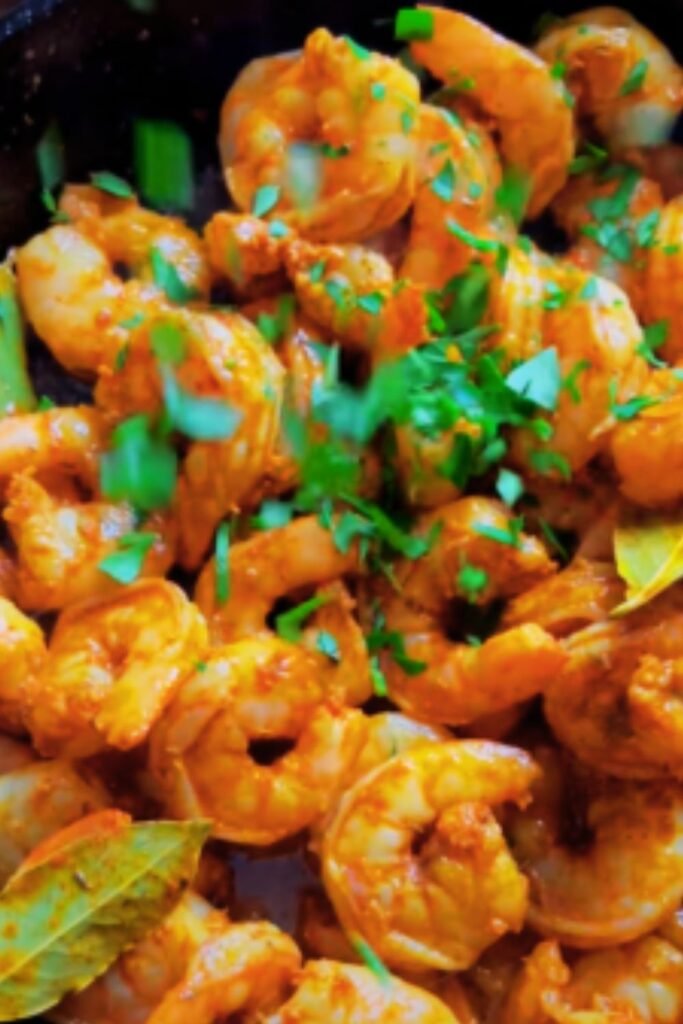
Shrimp Selection and Preparation
Fresh vs. Frozen Despite what you might think, frozen shrimp is often a better choice than “fresh” shrimp at the seafood counter, which has typically been frozen and thawed already. Buy IQF (individually quick frozen) raw shrimp and thaw them yourself for best results.
Deveining Techniques Use a small paring knife or dedicated shrimp deveiner to make a shallow cut along the back of each shrimp, then lift out the dark intestinal tract. For an even easier approach, butterfly the shrimp by cutting deeper, which opens them up nicely and creates more surface area for the spices.
Shell On or Off? While shells add flavor, they make the dish messier to eat. My compromise: remove the shells but leave the tails on for presentation and as a handle when eating.
Spice Control
Everyone has different heat preferences, so here’s how to customize:
| Heat Level | Cayenne Amount | Other Adjustments |
|---|---|---|
| Mild | 1/2 teaspoon | Add extra paprika for color without heat |
| Medium | 1 teaspoon | Standard recipe amount |
| Hot | 2 teaspoons | Consider adding 1/4 teaspoon crushed red pepper flakes |
| Extra Hot | 1 tablespoon | Add a minced fresh jalapeño or serrano to the vegetables |
Remember: you can always add more heat at the table with hot sauce, but you can’t remove it once it’s in the dish!
Cooking Surface Matters
A properly heated cast iron skillet creates the perfect sear on Cajun shrimp, developing a flavorful crust that’s hard to achieve with non-stick cookware. If you don’t have cast iron, a heavy-bottomed stainless steel pan is your next best option.
Serving Suggestions
The beauty of Cajun shrimp is its versatility. While I love it over simple steamed rice, here are other delicious ways to enjoy it:
- Cajun Shrimp Pasta: Toss with fettuccine and a touch of cream for a decadent meal
- Cajun Shrimp Tacos: Serve in warm tortillas with slaw and avocado
- Low-Carb Option: Serve over cauliflower rice or zucchini noodles
- Appetizer Style: Serve with toothpicks as a party appetizer
- Surf and Turf: Pair with a small steak for special occasions
Complementary Side Dishes
- Crusty French bread for soaking up the flavorful sauce
- Southern-style collard greens
- Creamy coleslaw (the coolness balances the spice)
- Corn on the cob
- Simple green salad with vinaigrette
Non-Alcoholic Beverage Pairings
- Sweet tea (the classic Southern beverage)
- Lemonade (citrus complements seafood beautifully)
- Sparkling water with lime
- Cucumber-mint infused water (refreshing with spicy food)
Variations on Classic Cajun Shrimp
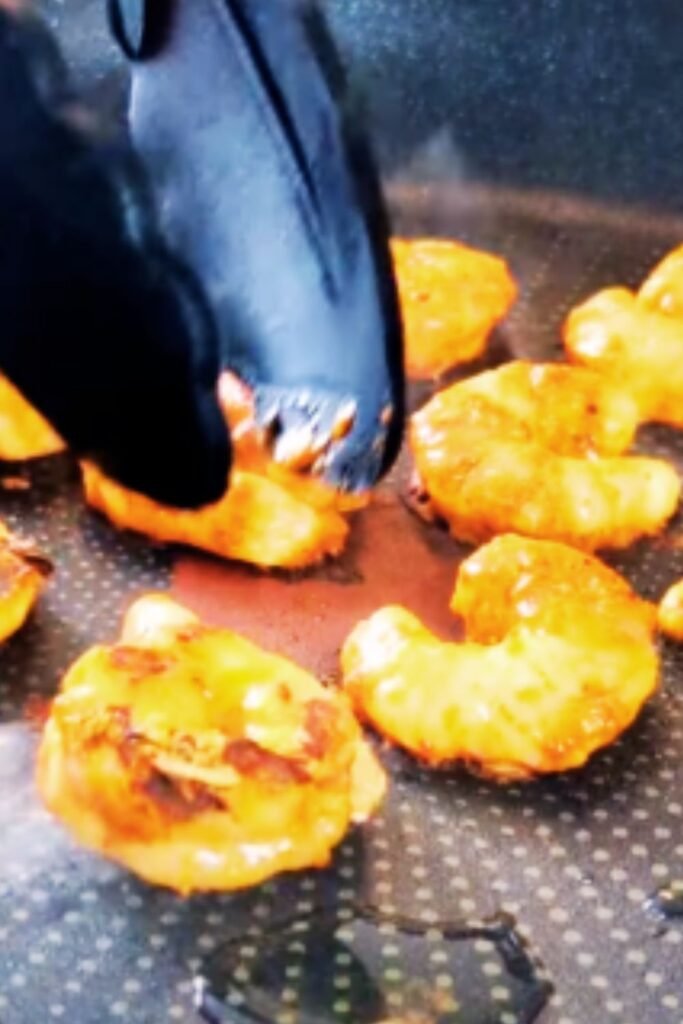
Cajun Shrimp and Sausage Skillet
Add 12 ounces of sliced andouille sausage to the vegetable sauté step for a heartier, one-pan meal with authentic Louisiana flavors.
Creamy Cajun Shrimp
After cooking the shrimp and returning the vegetables to the pan, add 1/2 cup of heavy cream and 1/4 cup grated Parmesan cheese. Simmer until slightly thickened for a richer sauce that’s wonderful with pasta.
Grilled Cajun Shrimp Skewers
Thread the seasoned shrimp onto skewers and grill over medium-high heat for 2-3 minutes per side. The smoky char from the grill adds another dimension to the flavor profile.
Cajun Shrimp Étouffée-Style
Create a thicker sauce by adding 2 tablespoons of flour to the vegetable sauté, cooking for 1-2 minutes before adding 1 1/2 cups of seafood stock. Simmer until thickened, then add the shrimp.
Common Challenges and Solutions
| Problem | Cause | Solution |
|---|---|---|
| Rubbery, tough shrimp | Overcooking | Cook for less time; remove from heat when just pink |
| Bland flavor despite seasoning | Not enough salt or acid | Add salt and a squeeze of fresh lemon juice |
| Too spicy | Too much cayenne | Balance with a touch of honey or serve with cooling accompaniments like avocado |
| Watery sauce | Excess moisture from vegetables or shrimp | Pat shrimp dry before seasoning; cook vegetables longer to reduce moisture |
| Burnt spices | Heat too high | Use medium-high rather than high heat; add some spices later in cooking |
Storage and Reheating
Cajun shrimp is best enjoyed immediately after cooking, but if you have leftovers:
- Store in an airtight container in the refrigerator for up to 2 days
- Reheat gently in a skillet over low heat with a splash of water to create steam
- Alternatively, reheat in the microwave at 50% power in short intervals to prevent overcooking
- Consider repurposing leftovers into a cold shrimp salad rather than reheating
Health Benefits of Cajun Shrimp
When prepared with moderate amounts of oil and butter, Cajun shrimp is actually quite nutritious:
| Nutrient | Benefit | Source in this Recipe |
|---|---|---|
| Protein | Muscle building, satiety | Shrimp (approximately 24g protein per 4oz serving) |
| Omega-3 fatty acids | Heart health, inflammation reduction | Shrimp |
| Capsaicin | Metabolism boosting, pain relief | Cayenne pepper |
| Vitamin C | Immune support, collagen production | Bell peppers (particularly red ones) |
| Antioxidants | Cell protection, anti-aging | Herbs, spices, vegetables |
| Selenium | Thyroid function, antioxidant properties | Shrimp |
Frequently Asked Questions
Can I use pre-cooked shrimp for this recipe?
While fresh or frozen raw shrimp is preferred, you can adapt this recipe for pre-cooked shrimp. Season them as directed, but add them at the very end of cooking, just long enough to heat through (about 1 minute). Cooking them any longer will result in tough, rubbery shrimp.
Is Cajun seasoning the same as Creole seasoning?
They’re similar but not identical. Cajun seasoning tends to be spicier and simpler, while Creole seasoning often includes more herbs and sometimes paprika. You can substitute Creole seasoning in this recipe, but you might want to adjust the heat level with additional cayenne.
How can I make this dish less spicy without losing the Cajun flavor?
Reduce the cayenne pepper in your seasoning blend and increase the paprika, which provides color and mild flavor without heat. Also, serving the dish with cooling elements like avocado or a dollop of sour cream can help balance the spice.
What’s the best way to tell when shrimp are perfectly cooked?
Perfectly cooked shrimp will be pink with red tails and will have just curled into a C-shape. If they curl into a tight O-shape, they’re overcooked. Remember that shrimp continue cooking briefly after being removed from heat, so it’s better to err on the side of undercooking.
Can I make the seasoning blend in advance?
Absolutely! The spice blend will keep in an airtight container for up to 3 months. Making a larger batch saves time for future meals and ensures consistency in your cooking.
What’s the best way to devein shrimp while keeping them whole?
Use a sharp paring knife to make a shallow cut along the back of the shrimp, then use the tip of the knife or a toothpick to lift out the dark vein. Rinse briefly under cold water to remove any remaining vein fragments.
Can I make this dish ahead for a party?
I don’t recommend cooking the shrimp ahead of time as they tend to overcook when reheated. However, you can prep all the vegetables and make the seasoning blend in advance. The actual cooking takes less than 15 minutes once everything is prepped.
How can I make this a complete one-pot meal?
To create a one-pot meal, add 1 cup of rice and 2 cups of broth when you return the vegetables to the pan. Cover and simmer for 15 minutes, then add the seasoned shrimp on top, cover again, and cook for an additional 5 minutes until the shrimp are pink and the rice is tender.
Final Thoughts
Mastering Cajun shrimp is about understanding balance—between spicy and savory, between cooking thoroughly and not overcooking, between honoring tradition and making the dish your own. The recipe I’ve shared comes from years of experimentation and a deep appreciation for the cultural heritage behind this magnificent cuisine.
What makes Cajun cooking special isn’t just the distinctive spice blend, but the spirit behind it—resourceful, bold, and generous. It’s comfort food that doesn’t play it safe, and when done right, it’s an experience that stays with you long after the meal is over.
So heat up that skillet, embrace the sizzle, and prepare to transport your tastebuds to Louisiana’s bayou country. Your perfect plate of Cajun shrimp awaits!

